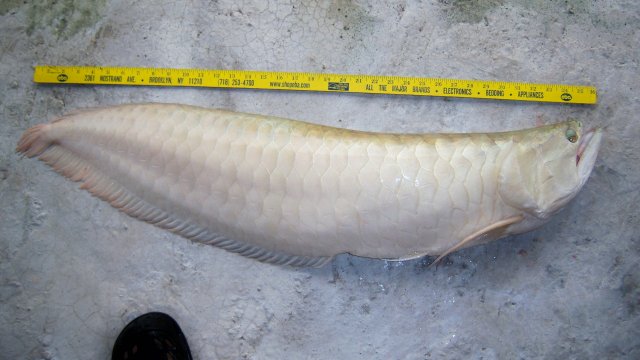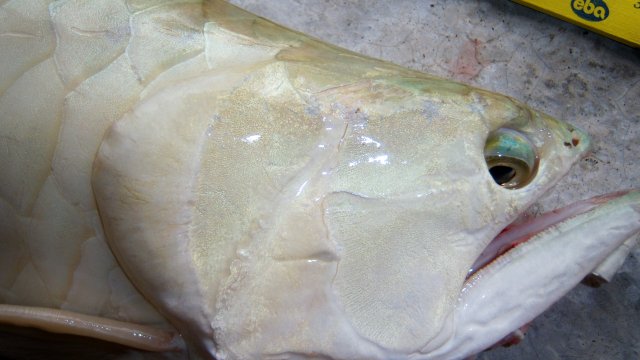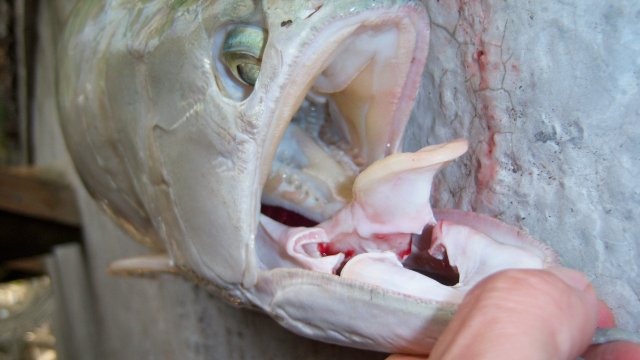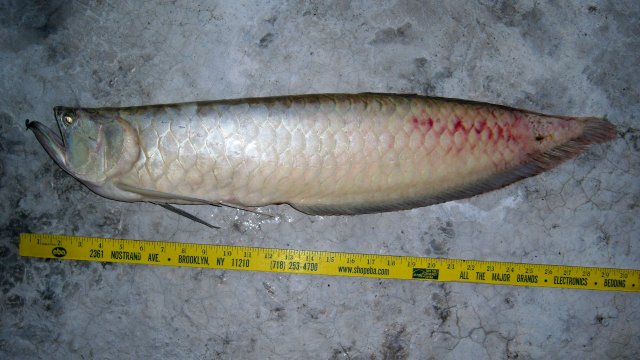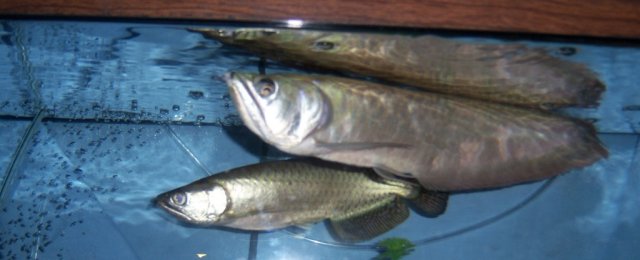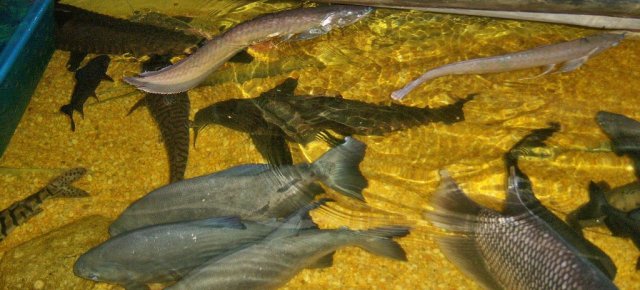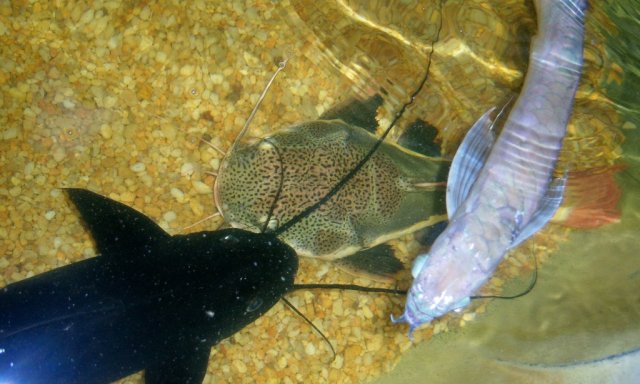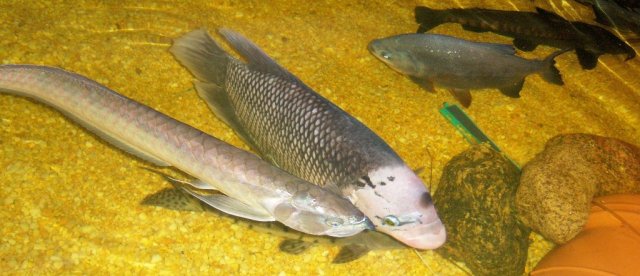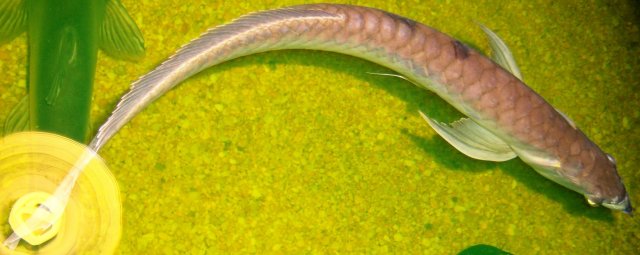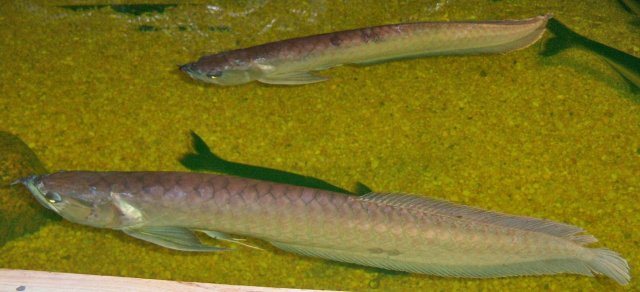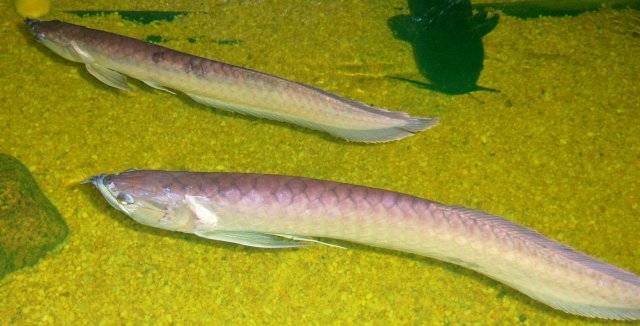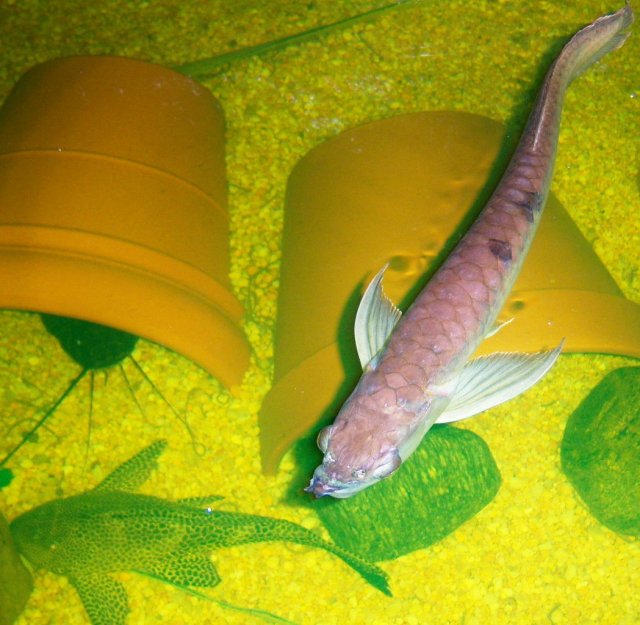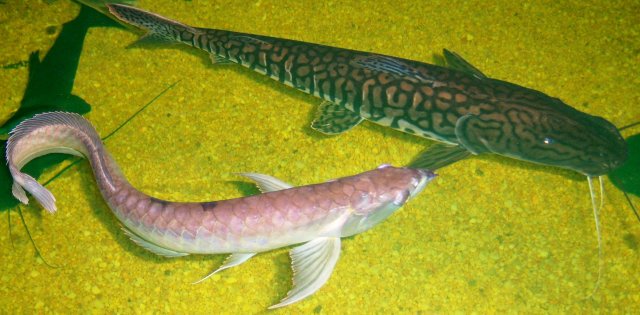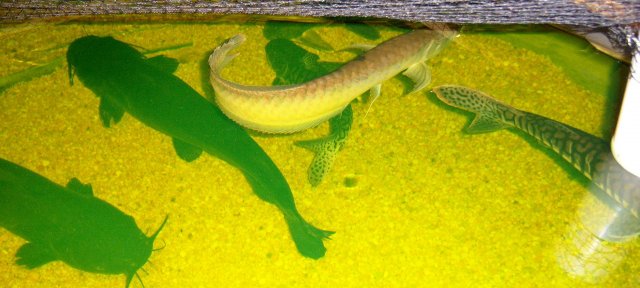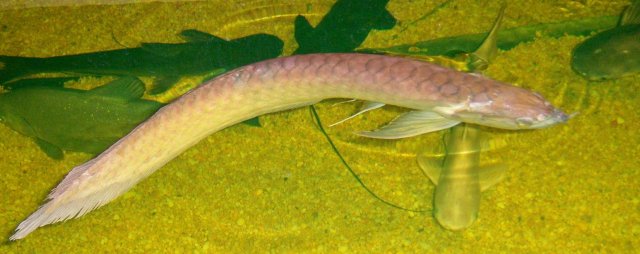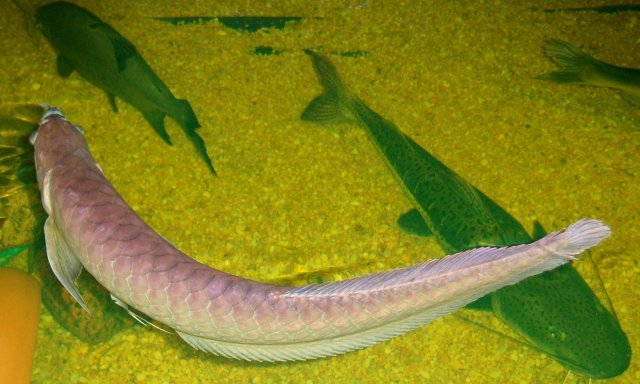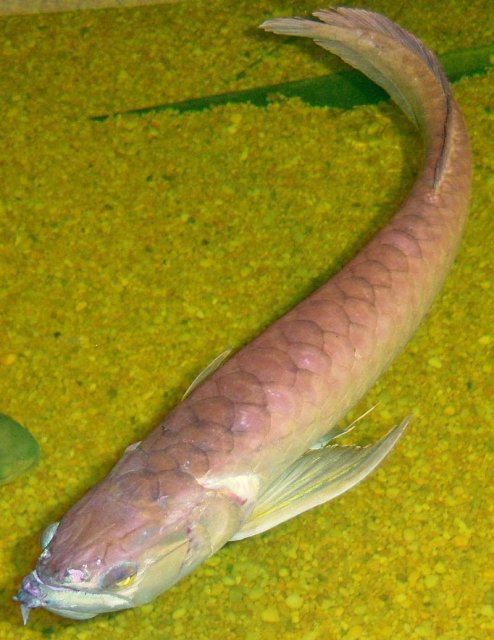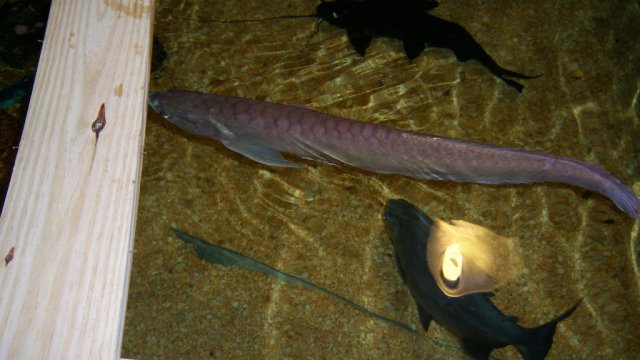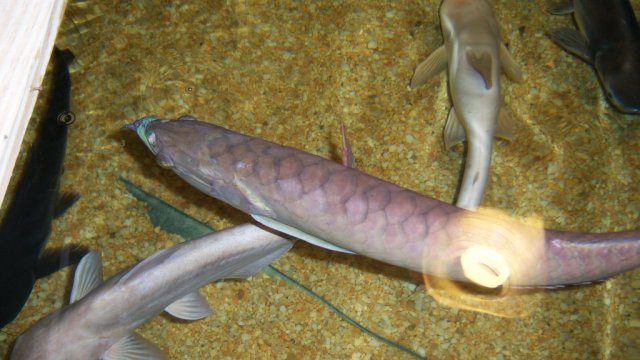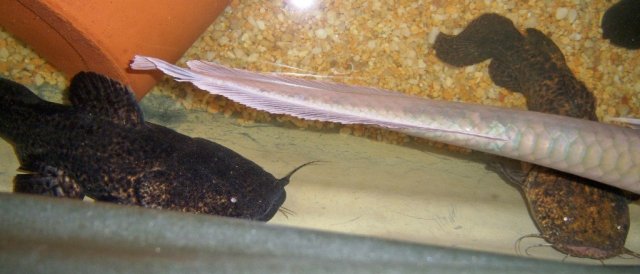Our arowana bad streak goes on. In the last year we had lost two big old ones, Delray and Fre, and now the relative newcomer Falcorina has died at 30 inches at probably 2.5 years old. We got her less than a year ago. At present I believe this is just a coincidence and no common cause can I identify.
Falcorina had been doing exceptionally well, feeding vigorously, chasing all the 4 huge males around, who didn't answer back to her, bothering a new supposed female named Ylania in the 4500 gal so that I had to rehome Ylania to an 1800 gal. Then abruptly stopped feeding two months ago and just hovered in one corner, eventually losing ability to swim in the last days and passing in a hospital tank.
No clue why, perhaps an internal problem, or it swallowed a piece of spiny / bony fish the wrong way, which is far stretched but fathomable, I guess.
Falcorina had been doing exceptionally well, feeding vigorously, chasing all the 4 huge males around, who didn't answer back to her, bothering a new supposed female named Ylania in the 4500 gal so that I had to rehome Ylania to an 1800 gal. Then abruptly stopped feeding two months ago and just hovered in one corner, eventually losing ability to swim in the last days and passing in a hospital tank.
No clue why, perhaps an internal problem, or it swallowed a piece of spiny / bony fish the wrong way, which is far stretched but fathomable, I guess.


